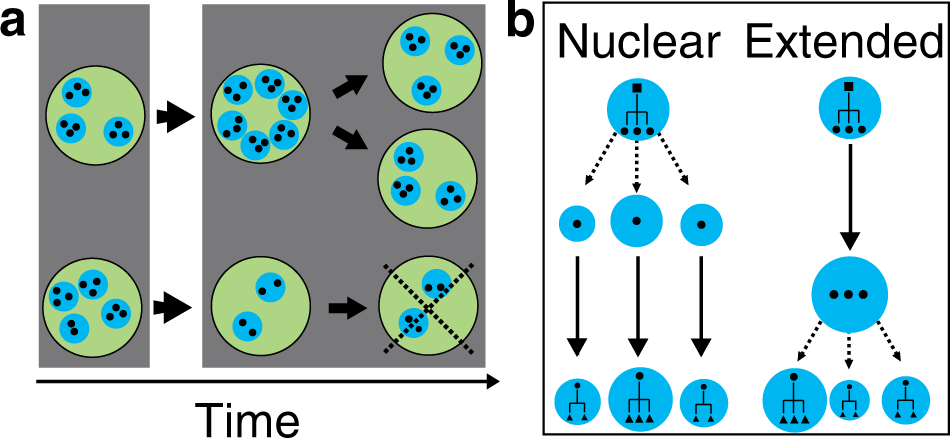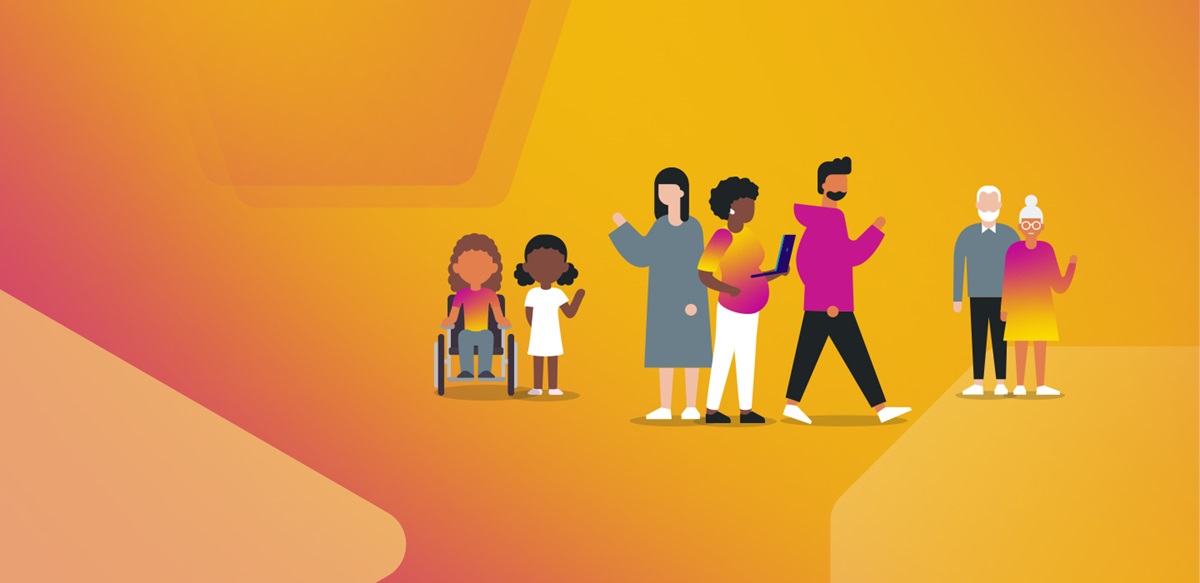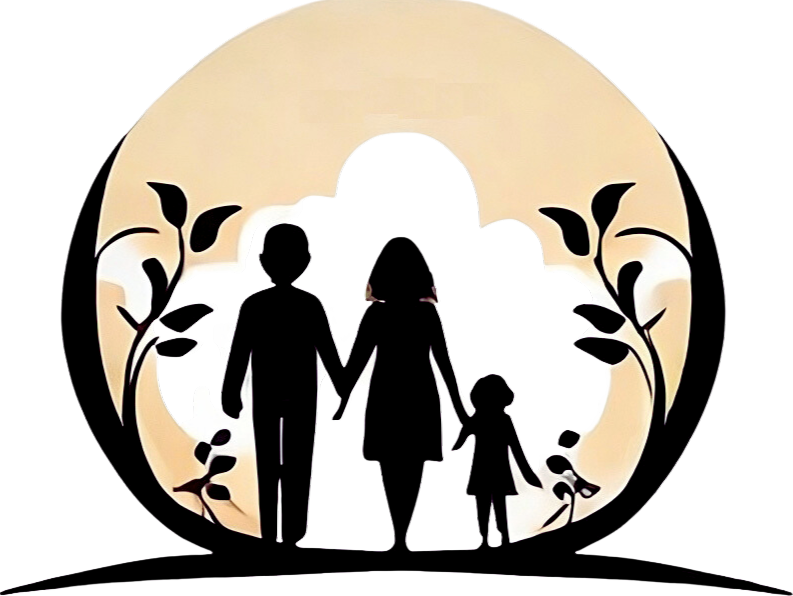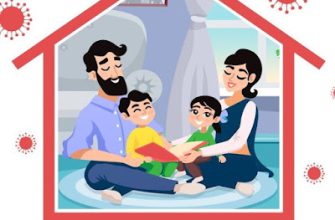- The Evolution of the Modern Family Unit: Understanding the Changes in Family Structure
- The Traditional Family Unit
- Definition and Characteristics
- Exploring the historical concept of the traditional family unit and its defining characteristics.
- Roles and Responsibilities
- Examining the traditional gender roles and divisions of labor within the family structure.
- Challenges and Changes
- Social and Cultural Shifts
The Evolution of the Modern Family Unit: Understanding the Changes in Family Structure

In today’s society, the concept of a traditional family structure has undergone significant changes. No longer is the standard family configuration limited to a married couple and their biological children. Instead, we are witnessing the emergence of diverse family units that challenge societal norms and redefine what it means to be a family.
One of the key factors driving this evolution is the decline in marriage rates and the increase in cohabitation. In the past, marriage was seen as a prerequisite for starting a family. However, with changing social attitudes and values, more couples are choosing to live together without getting married. This phenomenon has led to the rise of cohabiting couples, who form a family unit outside the confines of traditional marriage.
Another significant change is the increase in blended families. With divorce rates on the rise, many individuals find themselves in new relationships and forming families with stepchildren. These blended families involve a mix of biological and non-biological parents, creating complex family dynamics and unique challenges.
Furthermore, the definition of family has expanded to include same-sex couples. Thanks to various legal developments, such as the legalization of same-sex marriage in many countries, these couples can now form families and raise children together. This change has challenged traditional notions of parenthood and highlighted the importance of love and emotional support as the foundation of a family unit.
The concept of the family unit has undergone significant changes over the years. In the past, the traditional family unit typically consisted of a married heterosexual couple and their biological children. However, societal changes and cultural shifts have led to a more diverse understanding of what constitutes a family.
One major shift in the modern family unit is the acceptance and recognition of same-sex couples and their families. In many countries, same-sex marriage has become legal, granting these couples the same legal rights and protections as heterosexual couples. This change has helped reshape the traditional idea of a family and has led to an increase in LGBTQ+ representation in the media and society as a whole.
Another notable change in the contemporary concept of the family is the rise of single-parent households. Whether by choice or circumstance, more individuals are opting to raise children on their own. This may be a result of divorce, the death of a spouse, or a decision to have children without a partner. Single-parent households face unique challenges, but they are also becoming more accepted and supported by society.
The modern family concept has also witnessed an increase in blended families. Blended families occur when two individuals with children from previous relationships come together to form a new family unit. This can lead to intricate dynamics and challenges as the members of the blended family navigate their relationships with each other. However, with open communication and a willingness to adapt, blended families can form strong bonds and a sense of unity.
Additionally, the modern family unit has been influenced by changes in reproductive technology and surrogacy. As advancements in science have allowed individuals and couples to have children through alternative means, the definition of the family unit has expanded. Assisted reproduction, such as in vitro fertilization, has made it possible for individuals and couples to conceive and raise children in non-traditional ways.
In conclusion, the modern family unit has evolved to be more diverse and inclusive. The acceptance and recognition of different family structures have allowed for the understanding that there is no one-size-fits-all definition of family. Society’s understanding of the family unit has grown to encompass various relationships and identities, reflecting the changing dynamics of contemporary society.
The concept of a traditional family unit, consisting of a married heterosexual couple with children, is no longer the prevailing norm in today’s society. In recent decades, significant changes have occurred in family structure, which reflect the shifting values and lifestyles of individuals.
One of the most prominent changes in family structure is the increase in single-parent families. Recent statistics indicate that the number of single-parent households has been steadily rising. This can be attributed to factors such as divorce, separation, and the decision to have children outside of a committed relationship.
Another significant change is the growing acceptance and recognition of same-sex partnerships and marriages. With increased legal rights and societal support, same-sex couples are now able to form families and raise children together. This has challenged traditional notions of family structure and expanded the definition of what constitutes a family.
In addition to single-parent and same-sex families, there has also been an increase in cohabiting couples who choose not to marry or have children outside of marriage. Cohabitation has become more socially acceptable and is often seen as a precursor to marriage or an alternative to it.
The changes in family structure have had both positive and negative impacts on individuals and society as a whole. On one hand, the diversity of family structures allows for greater representation and inclusivity. It promotes the idea that love, support, and commitment can be found in various forms of relationships.
On the other hand, the changing family structure has also presented challenges. Single-parent families, for example, may face financial difficulties and emotional strain due to the absence of a second parent. Children in non-traditional families may also experience stigma or discrimination from their peers or society.
| Traditional Family | Single-Parent Family | Same-Sex Family | Cohabiting Couple |
|---|---|---|---|
| Married heterosexual couple with children | One parent raising children alone | Same-sex couple raising children | Unmarried couple living together |
| Considered the norm for many years | The number is steadily increasing | Have gained legal rights and societal acceptance | Viewed as a precursor to marriage or an alternative |
| Reflects traditional values and expectations | May face financial and emotional challenges | Expands the definition of family | Increasingly socially acceptable |
In conclusion, understanding the changes in family structure is essential to gaining a comprehensive view of modern society. The traditional family unit is no longer the sole representation, as single-parent families, same-sex families, and cohabiting couples have become more prevalent. It is crucial to recognize and respect the diverse forms of families that exist, as they shape the lives of individuals and contribute to the fabric of our society.
The Traditional Family Unit
The traditional family unit refers to a household structure that was prevalent in societies for many years. It typically consisted of a married heterosexual couple and their biological or adopted children, living together under one roof. This family structure was seen as the norm in many cultures and was considered the foundation of society.
In the traditional family unit, the roles and responsibilities of family members were often defined by gender. The husband and father were generally the breadwinners, responsible for earning money and providing for the family’s financial needs. The wife and mother were typically in charge of household chores and taking care of the children.
There was also a clear hierarchy in the traditional family unit, with the father being the head of the household and making most of the important decisions. The mother played a supportive role and often had less power and agency compared to the father.
The traditional family unit was also influenced by cultural and religious beliefs, with specific expectations and norms for family behavior. For example, in some cultures, it was expected for families to live in close proximity to their extended relatives and to prioritize filial piety and respect for elders.
However, it is important to note that the traditional family unit has evolved and changed over time. There has been a shift in societal values and norms, leading to a more diverse range of family structures and dynamics. This includes single-parent households, same-sex couples raising children, and blended families.
Overall, understanding the traditional family unit provides a foundation for examining the changes in family structure and the factors that have influenced the evolution of the modern family unit.
Definition and Characteristics
When discussing the evolution of the modern family unit, it is important to first establish a clear definition and understanding of its characteristics. The modern family refers to a diverse range of family structures that differ from the traditional nuclear family.
The traditional nuclear family typically consists of a married heterosexual couple and their biological or adopted children. However, the modern family includes various configurations such as single-parent families, cohabiting couples, blended families, same-sex parents, and multi-generational households.
One of the key characteristics of the modern family unit is its diversity. Modern families can be formed through various means, such as marriage, cohabitation, adoption, surrogacy, and assisted reproductive technologies. This diversity reflects the changing societal norms and values, as well as an increased emphasis on individual choice and personal fulfillment.
Another characteristic of the modern family is its fluidity. Family structures can change over time due to factors such as divorce, remarriage, the birth of new children, or the death of family members. It is not uncommon for modern families to have multiple parenting figures or to include extended family members who play a significant role in the upbringing of children.
Exploring the historical concept of the traditional family unit and its defining characteristics.

The traditional family unit, as it has been understood for centuries, typically consisted of a married heterosexual couple and their biological children. This concept of the family was deeply rooted in cultural and religious norms, and it served as the foundation of societal structure. The husband was the breadwinner, responsible for providing for the family financially, while the wife’s primary role was to manage the household and take care of the children.
One of the defining characteristics of the traditional family unit was its stability and permanence. Marriage was considered a lifelong commitment, and divorce was highly stigmatized and discouraged. The family unit was seen as a source of strength, stability, and support, providing a solid foundation for individuals to thrive.
In addition, the traditional family unit often emphasized traditional gender roles. Men were expected to be strong, assertive, and the head of the household, while women were expected to be nurturing, submissive, and focused on domestic duties. These gender roles were largely influenced by societal expectations and reinforced by cultural and religious institutions.
Furthermore, the traditional family unit typically involved multiple generations living together under one roof. Grandparents often played an active role in the upbringing of grandchildren, and extended family members provided support and assistance when needed. This intergenerational support network helped foster a sense of community and ensured the well-being of all family members.
However, it is important to note that the concept of the traditional family unit has evolved and changed over time. Today, families come in diverse forms, including single-parent families, same-sex couples with children, and blended families. These changes reflect the shifting societal norms and values, as well as advancements in reproductive technologies and legal recognition of different types of relationships.
In conclusion, the traditional family unit is a historical concept that has undergone significant transformations. Understanding its historical context and defining characteristics allows us to appreciate the changes that have taken place and the diversity of family structures that exist today.
Roles and Responsibilities
The evolution of the modern family unit has led to significant changes in the roles and responsibilities within families. In traditional family structures, the roles were often rigidly defined and divided along gender lines. However, in modern families, these roles and responsibilities have become more flexible and varied.
In many modern families, both parents work outside the home, which has led to a more balanced division of household and childcare responsibilities. It is not uncommon to see fathers taking on a more active role in parenting and household chores, while mothers pursue careers and contribute financially to the family.
The responsibilities within the family unit are now often shared and negotiated between family members. For example, both parents may take turns preparing meals, doing laundry, or assisting with homework. This shift towards more shared responsibilities has created a more equitable distribution of labor within the family.
In addition to sharing household chores, modern families also share emotional support and decision-making responsibilities. Emotional support is crucial for the well-being of all family members, and it is no longer solely the responsibility of the mother or one parent. Both parents can provide emotional support to their children and each other.
Furthermore, decision-making within the family unit is now a collaborative process. Important decisions are often made together, with input from all family members. This inclusive approach to decision-making fosters a sense of shared responsibility and ensures that everyone’s needs and preferences are considered.
It is important to note that the roles and responsibilities within modern families can vary greatly depending on cultural, social, and individual circumstances. Some families may still adhere to traditional gender roles, while others embrace more egalitarian values.
| Traditional Family Roles | Modern Family Roles |
|---|---|
| Father as breadwinner | Both parents as breadwinners |
| Mother as primary caregiver | Shared caregiving responsibilities |
| Gender-specific household chores | Shared household chores |
| Decision-making by head of household | Collaborative decision-making |
In conclusion, the roles and responsibilities within the modern family unit have evolved to become more flexible, balanced, and shared. Both parents are now more likely to contribute equally to the financial, emotional, and household aspects of family life. This shift towards a more equitable distribution of roles and responsibilities has resulted in healthier and happier families.
Examining the traditional gender roles and divisions of labor within the family structure.
The traditional family structure has long been characterized by specific gender roles and divisions of labor. Historically, men have been expected to be the breadwinners, responsible for providing financial support for the family, while women have been assigned the role of homemakers, responsible for taking care of the household and raising children.
This division of labor has been deeply ingrained in society and has dictated the roles and responsibilities of men and women within the family. Men have traditionally held jobs outside the home, working long hours to earn a living and support their families financially. Women, on the other hand, have been responsible for managing the household, cooking, cleaning, and taking care of the children.
| Traditional Male Roles | Traditional Female Roles |
|---|---|
| Primary breadwinner | Homemaker |
| Career-focused | Family-focused |
| Decision-maker | Nurturer |
| Provider | Maintainer of the household |
These gender roles have perpetuated stereotypes and reinforced the idea that certain tasks and responsibilities are inherently masculine or feminine. However, with the changing dynamics of society and the increasing participation of women in the workforce, these traditional gender roles have begun to shift.
While many families still adhere to these traditional roles, there has been a gradual acceptance of a more equal division of labor. Men are taking on more household chores and child-rearing responsibilities, while women are pursuing careers outside the home. This shift in gender roles has led to a more balanced and egalitarian family structure where both partners share responsibilities and support each other’s ambitions.
It is important to recognize that traditional gender roles are not inherently negative or restrictive. They have served a purpose in societies throughout history and have provided stability and order within the family unit. However, it is equally important to acknowledge that these roles are not fixed and can evolve with the changing needs and dynamics of modern families.
Overall, examining the traditional gender roles and divisions of labor within the family structure allows us to understand the societal expectations and norms that have shaped and influenced family dynamics. By recognizing the shifts in these roles, we can better appreciate the progress that has been made towards a more equitable and inclusive family structure.
Challenges and Changes
As the modern family unit continues to evolve, there are several challenges and changes that have emerged. One of the main challenges is the increasing number of single-parent households. With the rise in divorce rates and single-parent adoptions, more children are growing up in homes with only one parent. This can place a significant amount of stress and responsibility on the single parent, as they often have to juggle multiple roles and responsibilities.
Another challenge that modern families face is the issue of work-life balance. With both parents often working full-time jobs, finding time to spend together as a family can be difficult. This can lead to feelings of guilt and stress, as parents try to prioritize their careers while also being present for their children.
The concept of gender roles and expectations within the family unit has also undergone significant changes. Traditional gender roles, where the father is the breadwinner and the mother takes care of the home and children, are no longer the norm. In many families, both parents contribute to the financial responsibilities and share household chores and childcare duties.
Furthermore, the modern family unit also faces challenges related to technology. The prevalence of smartphones, social media, and other digital devices can impact family dynamics, as it can lead to decreased face-to-face interaction and increased reliance on virtual communication. This can result in a lack of genuine connection and quality time spent together as a family.
To address these challenges and navigate the changes in family structure, it is important for modern families to prioritize open communication, flexibility, and adaptability. By fostering strong bonds and a supportive environment, families can overcome these challenges and create a positive and nurturing home for all members.
Social and Cultural Shifts
The modern family unit has experienced significant social and cultural shifts over the years. These shifts have had a profound impact on the structure and dynamics of families, challenging traditional norms and beliefs.
One of the major social shifts that has affected the modern family is the increase in divorce rates. In the past, divorce was seen as taboo and heavily stigmatized. However, societal attitudes towards divorce have changed, making it more socially acceptable and common. This shift has led to an increase in single-parent households and blended families, as individuals have sought new relationships and formed new families.
Another cultural shift that has influenced the modern family unit is the changing role of women in society. Women have increasingly entered the workforce, pursuing careers and participating more actively in decision-making processes. This shift has reshaped traditional gender roles within families, as women have taken on more prominent roles as breadwinners and decision-makers. It has also led to a greater emphasis on dual-income households and shared responsibilities between partners.
The rise of technology and the digital age have also had a significant impact on the modern family. The proliferation of smartphones, social media, and online communication platforms has changed the way families interact and connect with each other. While technology has provided new avenues for communication and connection, it has also introduced challenges such as increased screen time, decreased face-to-face interactions, and potential privacy issues.



